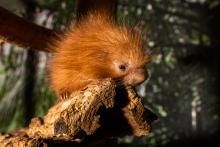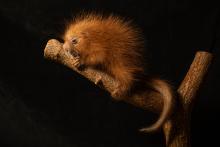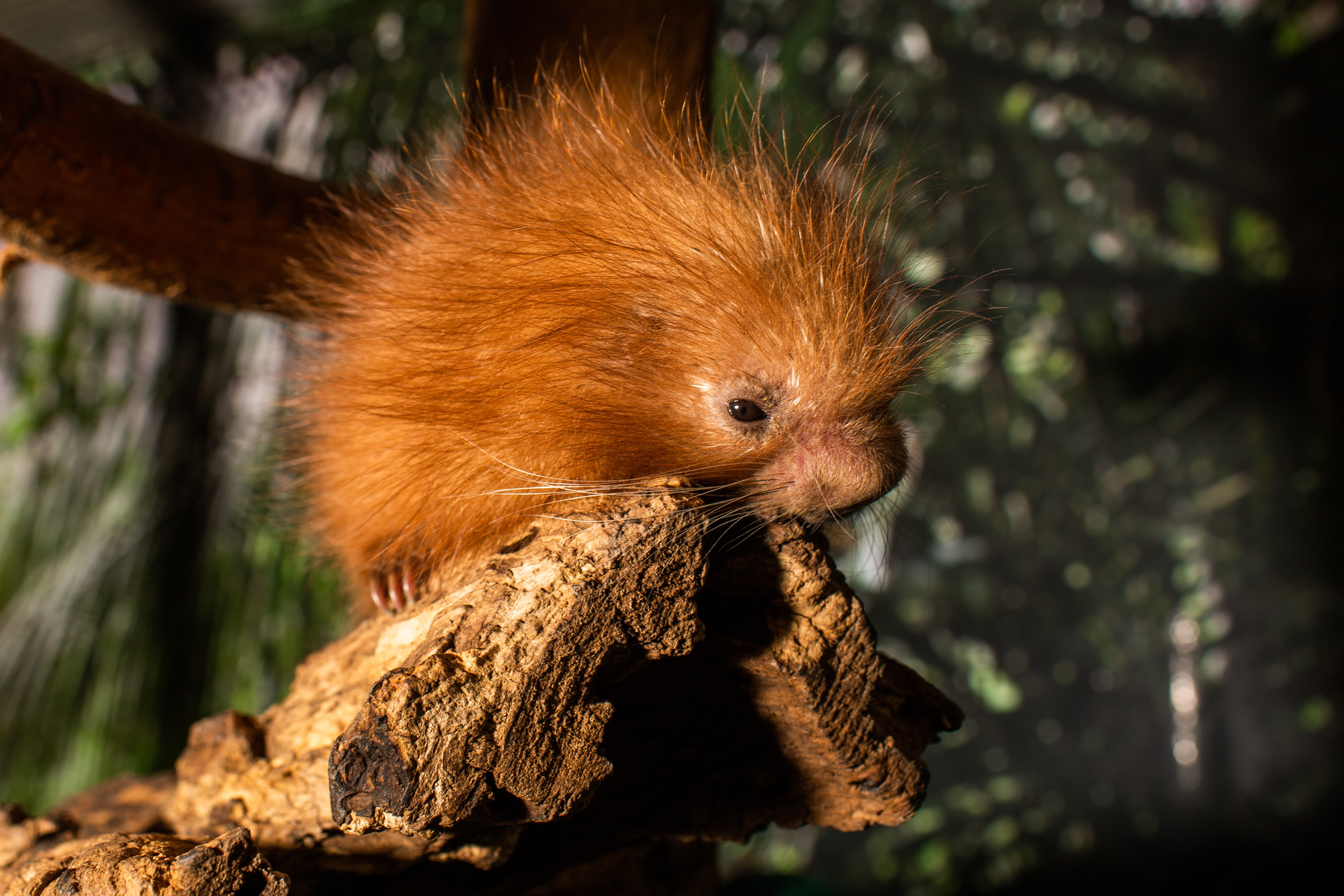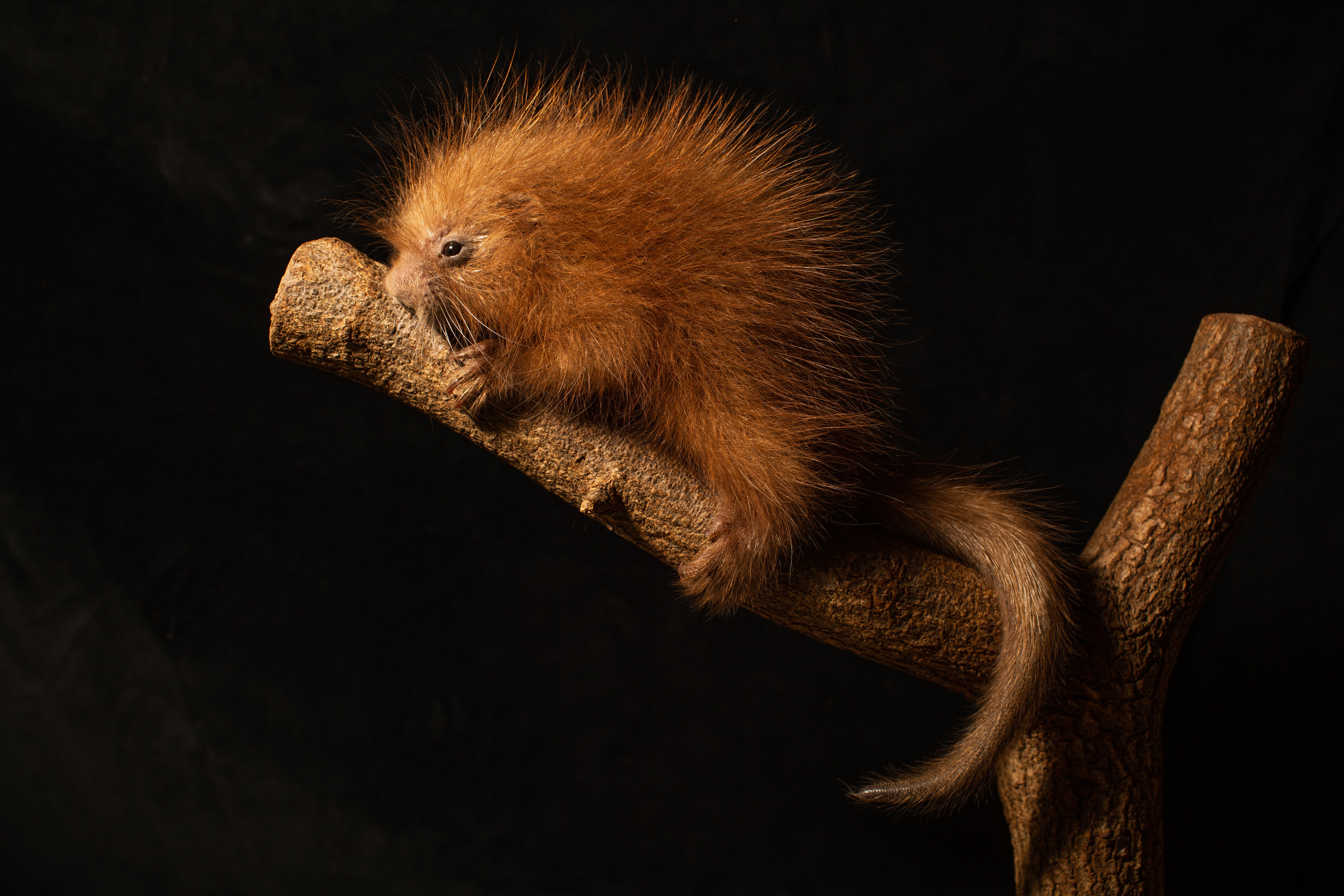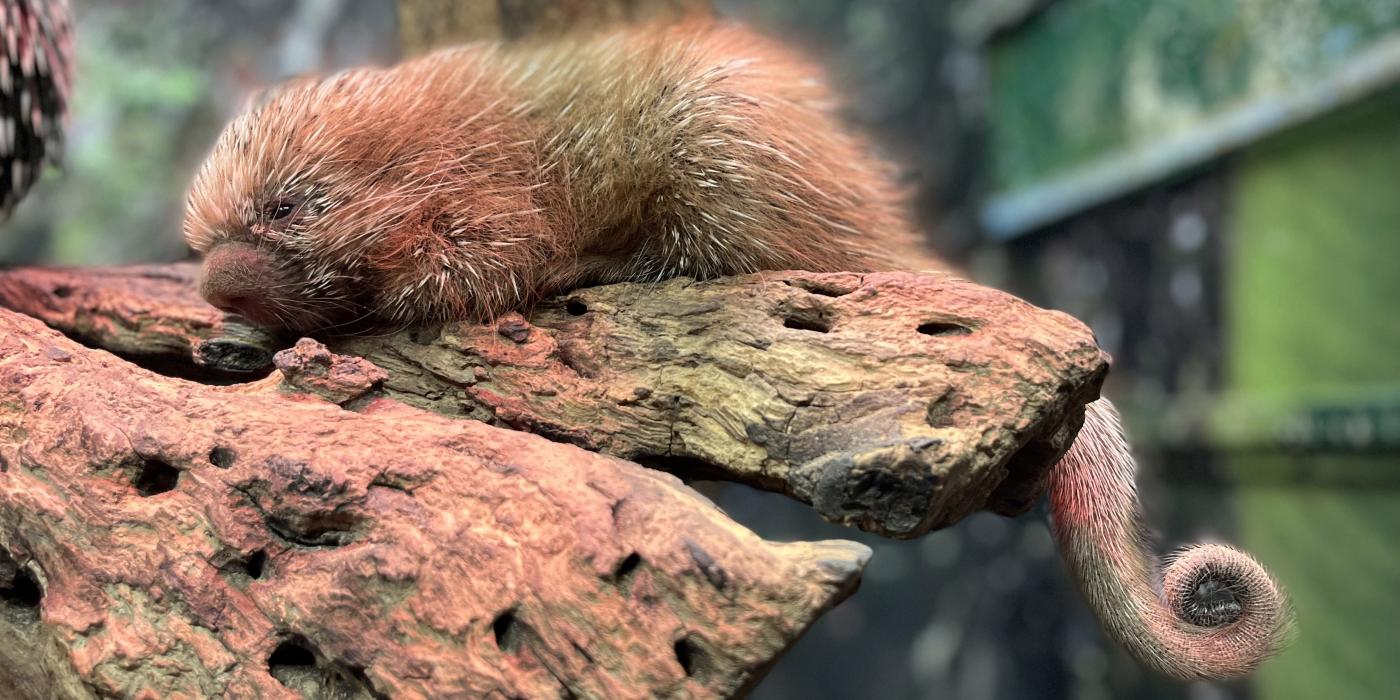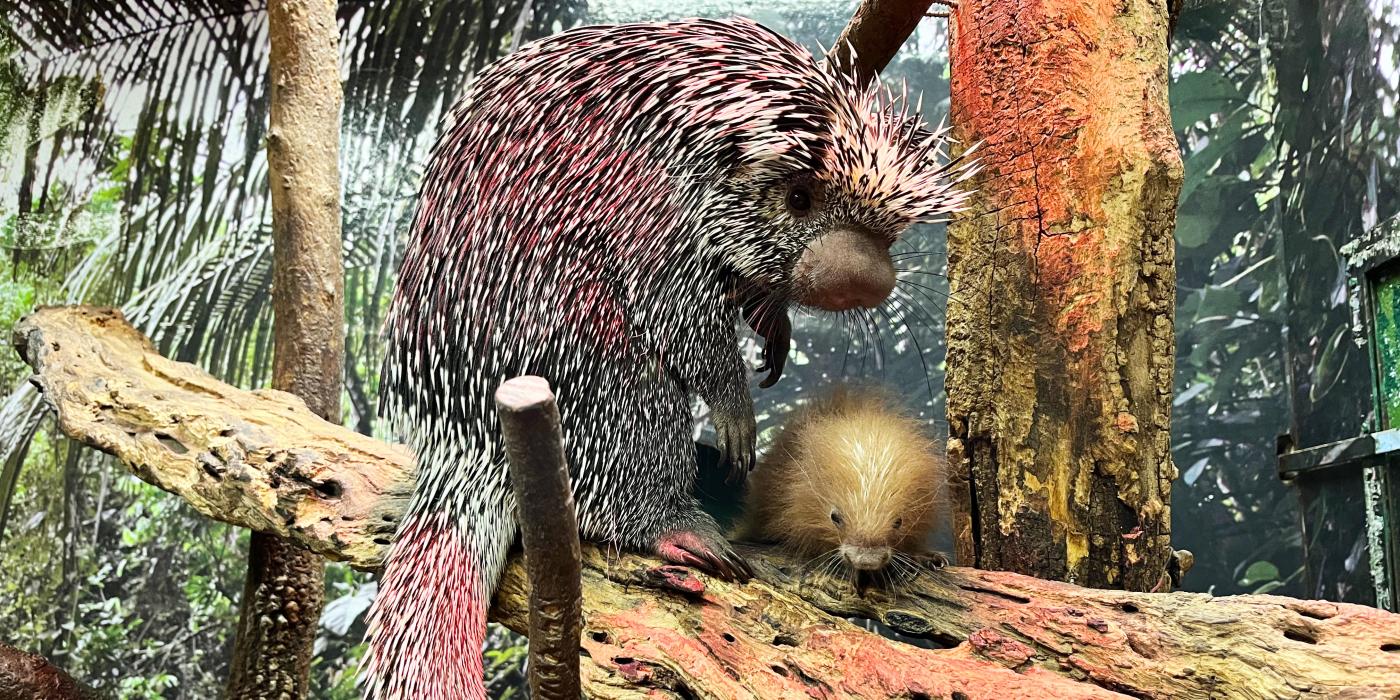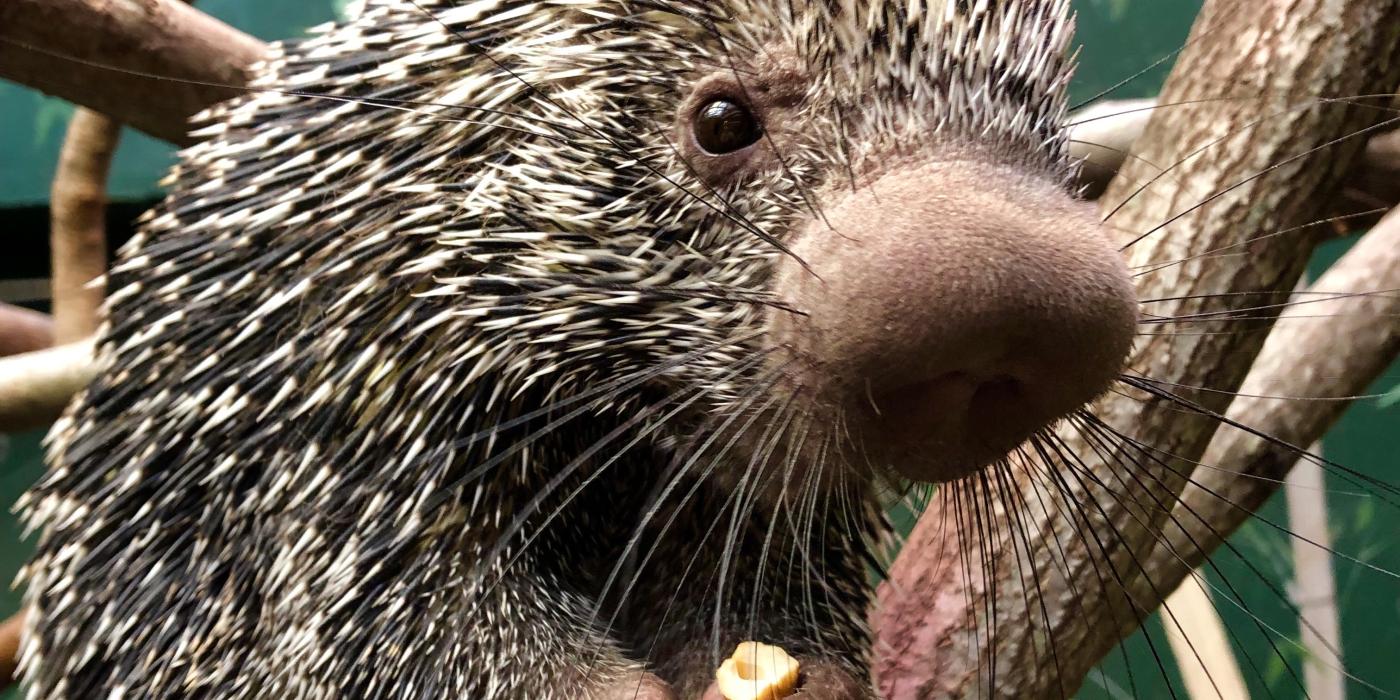Prehensile-Tailed Porcupine Born at the Smithsonian’s National Zoo
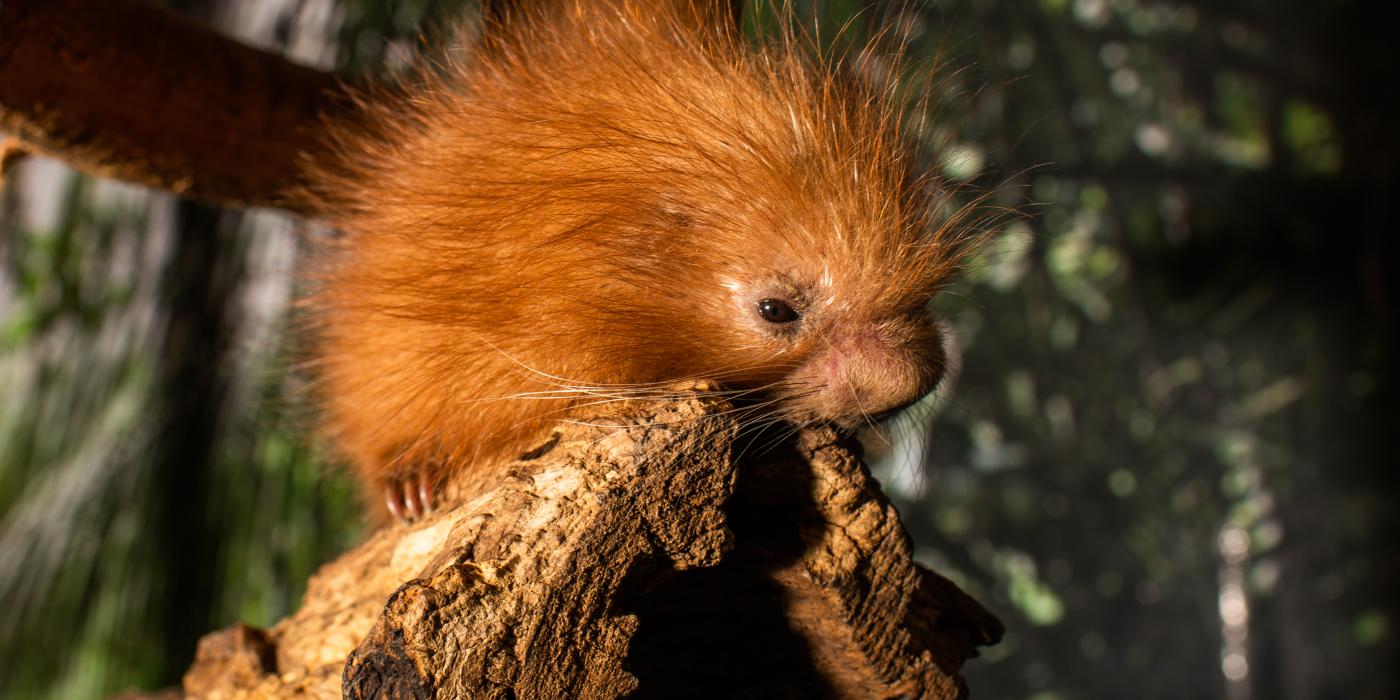
There is a prickle of excitement at the Small Mammal House at the Smithsonian’s National Zoo. Keepers discovered Beatrix, a 2-year-old prehensile-tailed porcupine, gave birth to a porcupette, overnight between Nov. 5 and Nov. 6. The porcupette appears to be healthy and strong.
Keepers had been monitoring Beatrix closely during the past several weeks in anticipation that she would give birth. Her weight had been steadily increasing, which was an indicator that she would likely give birth. She had bred with Quillbur, the Zoo’s adult male prehensile-tailed porcupine, just over six months ago. Veterinarians performed a quick neonate exam Nov. 6, during which the porcupette weighed less than 1 pound (400 grams) and is nursing successfully.
The porcupette is spending all of his or her time with Beatrix and can slowly navigate the tree branches of its habitat using its tail as a fifth limb to grasp branches. Scientists at the Smithsonian Conservation Biology Institute’s Center for Conservation Genomics will determine if the porcupette is a male or female by analyzing DNA from one of its quills. Prehensile-tailed porcupines have internal sex organs, which can make it difficult to determine if a porcupette is a male or female for six months or more.
Visitors to the Zoo can see the porcupine family in the Small Mammal House. The new baby is the first for mom Beatrix, marking the beginning of the fourth generation of this family to live in the Small Mammal House. Prehensile-tailed porcupines are nocturnal, and Beatrix and the baby spend most of their days sleeping nestled near each other. The baby will nurse overnight.
Soon keepers will begin working with the porcupette to participate in his or her own care. They will begin to desensitize him or her to their presence and then reward him or her for doing things like stepping on a scale or moving his or her nose to a target.
Native to South America, prehensile-tailed porcupines are one of about 18 species of New World porcupines. They have short, rigid quills interspersed with soft hairs. At birth, porcupette quills are soft, but they harden within minutes. An arboreal species, prehensile-tailed porcupines are adept at climbing and spend their time in tree canopies eating leaves, flowers, shoots and other vegetation. The name prehensile means “capable of grasping”; the underside of its tail lacks quills, allowing the porcupine to grip branches with this appendage and navigate the forest canopy with ease.
Related Species:
Image Gallery
